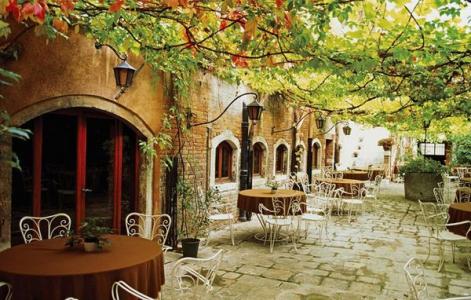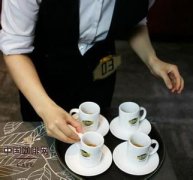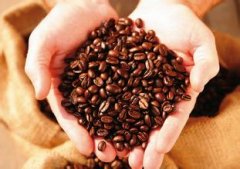A brief introduction to the history and culture of the origin and development of Galapagos boutique coffee beans with balanced acidity

In the mid-15th century, there were legends about enchanted mysterious islands among fishermen fishing in the western Pacific Ocean of South America. It is said that the islands can sometimes be seen clearly from a distance, but when the ship approaches, it disappears again; sometimes it looks like a galleon, sometimes it shows the shape of a witch. Fishermen call these islands "Devil Island", thinking that they may be ruled by demons like the sea banshees in the Odyssey. The island, which fishermen call "Magic Island", is now the Galapagos Islands.
In 1535, Frey Thomas de Belanga of Spain and others stumbled upon the Galapagos Islands. Thomas was born in 1487 on the Douro River in the province of Soria, Spain, and was the fourth bishop of Panama at that time. He was ordered to go to Peru. When his ship set sail from Panama on February 23, under the impact of a strong current, they were taken to the unknown sea and discovered a small island in the Galapagos Islands on March 10. At that time, there were only two days of fresh water left on the ship, and the sailors landed in lifeboats and found a large number of seals, sea turtles, giant tortoises that could carry people, and iguanas that looked like venomous snakes, but they did not find fresh water, so they sailed to another larger island more than 20 kilometers away. As there was still no wind, it took them several days to get there. The water ran out quickly and they had to starve, including the horses on the boat without grass.
Galapagos Islands Coffee Market:
Because of the unique role of the Galapagos Islands in the course of history, the Ecuadorian government has designated the archipelago as a national park, and the land is no longer allowed to be reclaimed as new agricultural land. and the introduction and use of chemical fertilizers, pesticides, herbicides and other chemicals, so the Galapagos Islands coffee is recognized as a natural product flavor: rich taste, sour and sweet
Suggest the characteristics of roasted Galapagos archipelago coffee:
The coffee produced in the Galapagos Islands (Galapagos Islands) is of excellent quality and is grown without any chemicals. St. Cristobal is a larger island in the Galapagos Islands (Galapagos Islands) and the only one of the archipelago with plenty of fresh water. At an altitude of 410m, there is a small lake called El.Junco, which forms streams along the rocks and volcanic rocks on the southern slope of the island, and mineral-rich fresh water moistens the land of St. Cristobal, keeping the soil moist and fertile. The local microclimate caused by the Humboldt current (HumboldtCurrent), strong equatorial sunlight and sharp temperature changes (43 degrees at sea level and 10-16 degrees above sea level) provide unique advantages for coffee producing areas in the Galapagos Islands:
Coffee is grown in San Cristobal (SaintCristobal). Arab bourbon coffee trees are planted in the Hasunda Coffee Garden (HaciendaElCafetal) in San Cristobal. The plantation is between 140 and 275 meters above sea level, and the climate in this area is equivalent to that of 915-1830 meters inland. This gradient is very suitable for the growth of high acidity extra hard coffee beans (SHB). It is also the key to the high quality of coffee. In 1875, Ecuador's native ManuelJ.Cobos began to grow Arabian bourbon coffee trees in the Hasunda Coffee Park (HaciendaElCafetal) in San Cristobal.
Ecuador is one of the few countries in South America that produces both Arabica and Robbins. However, as the land suitable for Arabica coffee trees is decreasing, the production of Robbins coffee is gradually increasing. The best Arabica coffee comes from the Andes, especially the Chanchagu Valley (Chanchamgo Valley). The Andes are divided into two mountains, extending from south to north to central Ecuador.
Flavor: balanced acidity and fragrance
Suggested roasting method: medium to deep roasting, can be made into high-quality mixed coffee, suitable for various uses
Evaluation: general
Ecuador Giant Turtle Island Coffee beans
Coffee treasures from the hometown of giant turtles
The best Ecuadorian coffee is grown on St. Cristobal Island in the Galapagos Islands, which has the unique natural geographical conditions for giving birth to the best quality coffee in the world. A cup of Galapagos coffee, like the beautiful scenery of the Galapagos Islands, is sure to impress you.
Important Notice :
前街咖啡 FrontStreet Coffee has moved to new addredd:
FrontStreet Coffee Address: 315,Donghua East Road,GuangZhou
Tel:020 38364473
- Prev

Floral and fruity Galapagos Coffee Bean Flavor Taste Aroma Description
This is where Galapagos Coffee is different, because the archipelago is located in a very special position, at the intersection of the Peruvian cold current in the south and the equatorial warm current in the north. Affected by the cold and warm currents, a small ecological environment has been formed locally. The climate here at 500 meters is equivalent to the climate of 900-1800 meters inland. This terrain is ideal for very hard coffee beans (SHB) with high acidity.
- Next

A brief introduction to the planting market price of pure fragrant Galapagos boutique coffee beans
But Thomas will never know that the island they landed on is the only island in the Galapagos archipelago that has plenty of fresh water, today's St. Cristobal Island (Saint Cristobal). St. Cristobal is a larger island in the Galapagos archipelago. At an elevation of 410m, there is a place called El.Junc.
Related
- Detailed explanation of Jadeite planting Land in Panamanian Jadeite Manor introduction to the grading system of Jadeite competitive bidding, Red bid, Green bid and Rose Summer
- Story of Coffee planting in Brenka region of Costa Rica Stonehenge Manor anaerobic heavy honey treatment of flavor mouth
- What's on the barrel of Blue Mountain Coffee beans?
- Can American coffee also pull flowers? How to use hot American style to pull out a good-looking pattern?
- Can you make a cold extract with coffee beans? What is the right proportion for cold-extracted coffee formula?
- Indonesian PWN Gold Mandrine Coffee Origin Features Flavor How to Chong? Mandolin coffee is American.
- A brief introduction to the flavor characteristics of Brazilian yellow bourbon coffee beans
- What is the effect of different water quality on the flavor of cold-extracted coffee? What kind of water is best for brewing coffee?
- Why do you think of Rose Summer whenever you mention Panamanian coffee?
- Introduction to the characteristics of authentic blue mountain coffee bean producing areas? What is the CIB Coffee Authority in Jamaica?

